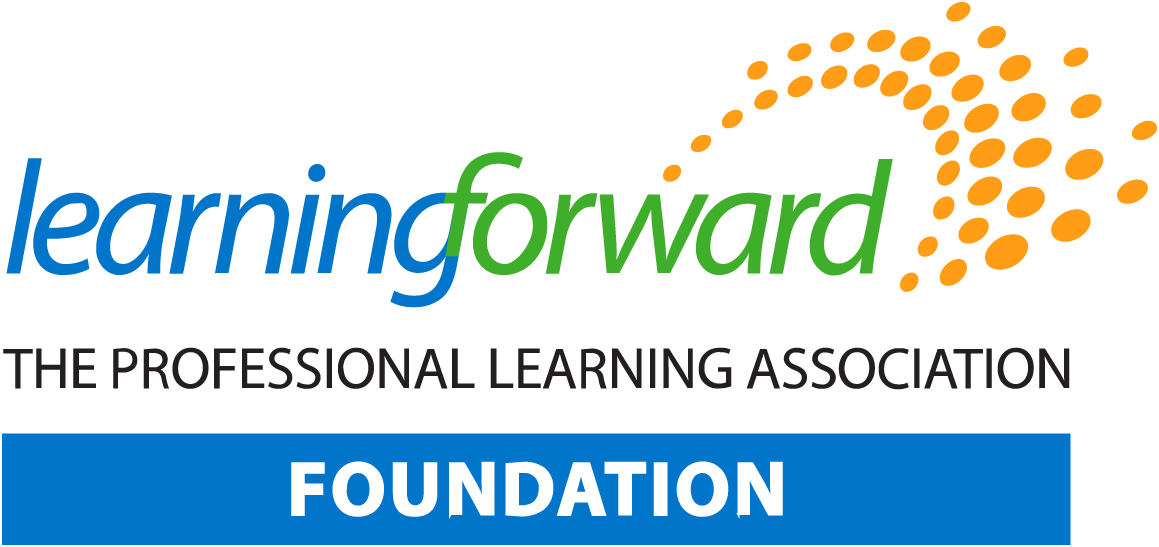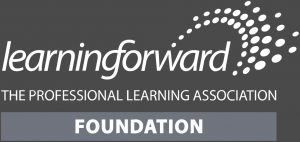By Heather Lageman
Last month we pondered our professional learning legacies and the people and the stories that have shone a light on our journeys. The learning is about the journey, not the destination – the destination changes.
 |
| Calandra Davis |
This month we are exploring the Learning Forward Foundation’s reflective learning process, Touchpoint, a one-hour facilitated learning conversation between foundation members and awardees. Learning Forward Academy Class of 2017 member Calandra Davis and her Learning Forward Foundation learning partners, Pat Roy and Janice Bradley used the Touchpoint process to create professional learning pathways for change.
The story begins with a common theme — how can educators use the Standards for Professional Learning and the mindset of professional learning to address their challenges? In the Touchpoint process, Foundation learning partners collaborated with Calandra to look to the Standards as an anchor to address her challenges.
Hailing from Quest Leadership Academy in South Carolina, Principal Calandra Davis applied for the School Based Leader grant in 2015 when she was experiencing insurmountable challenges with her staff. The school was concluding its first year of operation with limited personnel. The school had just endured a reduction in force due to budgetary constraints. All of the staff were new to their positions, and Quest was the first professional experience for most of the teachers. To exacerbate matters, the majority of students were academically two grade levels or more below their peers, based on baseline assessment data.
Charged with the task of increasing student achievement despite the challenges, Calandra was awarded the Foundation grant for her plan to develop and implement a curriculum mapping plan at Quest. Yet, as she and her fellow Academy members were soon to discover, change is learning, and learning is change. Through collaboration with her Academy peers and Foundation learning partners, Calandra quickly learned that her initial plan for curriculum mapping was far too weighty a task for a new school with such a small staff of primarily beginning teachers.
Calandra’s original plan evolved into the adoption of the Plan, Do, Study Act (PDSA) cycle, a quality tool of the Baldrige program, a government partnership that educates organizations in performance excellence management. The PDSA cycle is a four step process that when typically applied in educational settings, drives systemic change in student academic achievement through goal setting, instruction aligned to research based strategies, progress monitoring, the analysis of data, and student feedback. Baldrige quality tools are processes, strategies, or graphic organizers that facilitate individual or group problem solving, communication, or participation. They can be applied in both business and educational settings with ultimate goal of creating a system of continuous organizational improvement.
The Plan, Do, Study Act cycle aligned perfectly with the Leader in Me, a process the school was implementing that extensively embeds many of the quality principles of Baldrige. Accordingly, Calandra had a vision for what she wanted to do within the school that would bring about changes in student achievement but did not have a detailed plan for implementation or a method to garner staff support.
Through the Learning Forward Academy experience, Calandra gained the tools to implement the PDSA cycle with fidelity. She used these same tools to expand her teachers’ views of professional learning and in the process gained its support. In her application she expressed her desire to grow her staff in order to grow her students, and therefore grow her capacity as an instructional leader. The professional learning within the Academy allowed her to gain those skills necessary for the growth of her students, staff, and self while the inquiry and reflection associated with the Touchpoint conversations refined them. It was through those conversations that Calandra realized she did not always provide professional learning experiences to staff in a manner that was easily comprehendible to all participants. There was a delay in implementation by a few teachers that was a tell-tale sign of the their lack of understanding about how to implement the PDSA cycle within their classrooms (theory of change for the PDSA process). Consequently, all staff gained a firm understanding of how to implement the PDSA cycle with fidelity. That adherence to the PDSA cycle would not have taken place without the Touchpoint conversations.
Touchpoints have been intentionally designed to be a safe space to be vulnerable and learn. Learning Partner Janice Bradley uses her Creating the Learning Space protocol to create a sense of community and to give people voice. In this Touchpoint, Calandra’s openness to trusting the process and making connections made for fertile soil, teeming with life where many things can grow. She shifted her thinking, changing her language from “I” to “we” and in doing so found that teachers felt more ownership of their work.
Over the course of her Academy experience, Calandra crystallized several elements into a toolkit for learning and growing together:
- KASAB (Learning Designs standard) – is an acronym for the levels of learning that lead to change. They are knowledge, attitude, skills, aspirations, and behaviors. When developing a professional learning experience, one must consider the intended KASABs participants will possess as a result of the learning. Calandra used the KASABs when initially developing the professional learning experiences for staff but also used them with staff to create a theory of change, a process for developing a plan of action based on “if…then…” statements, for the implementation of the PDSA Cycle.
- Theory of change (Implementation standard) – A causal model of action planning, which requires one to justify why something will cause something else. It is based on “if…then…” statements and addresses the major components of an action plan. It is not concerned with the minutia of role assignments, time frames, training dates, meeting sites, etc.
- Logic model (Learning Designs standard) – After a theory of change is developed, the logic model expands upon your theory of change by detailing one’s inputs (resources); activities; and initial and intermediate goals that will lead to the ultimate, overarching goal. So, Calandra worked with staff to create a Logic model for PDSA implementation based on the theory of change that was developed by staff.
- Schoolwide implementation (Learning Communities standard) – In order for the PDSA cycle to be implemented with fidelity, all staff members needed to be on board. In a small, new school, the slightest bit of dissension would jeopardize the entire plan. Thus, staff support from the onset of the plan was integral to the process and was garnered through staff input during the development of the theory of change and subsequent logic model for PDSA implementation.
- Need to constantly support and reinforce learning (Leadership standard) – As every administrator knows, “You have to inspect what you expect.” Thus, weekly walk throughs were completed and staff was given timely feedback to ensure the PDSA cycles were completed correctly and were followed as posted on the classroom walls. Because Quest could not incorporate common planning for core academic teachers into the daily schedule due to the limited number of elective personnel, the school day was lengthened Monday through Thursday and shortened on Fridays to allow time for the entire staff’s professional learning. Weekly two-hour sessions were dedicated to professional learning about the school’s tenets; the Leader in Me Process, which again is embedded with Baldrige quality tools and the PDSA cycle, one of the quality tools. If ambiguity in implementing the PDSA cycle within the classroom was evident through walkthroughs, it was addressed during the weekly staff learning times.
The elements of Calandra’s toolkit became her core values, her anchor, for when challenges came and she needed to stay focused in the midst of changing conditions. “I am in love with professional learning,” Calandra says after two years in this journey. “It is a process – it doesn’t take place overnight. I struggled to be it all. I learned that everybody was needed to move the ship forward. I can’t do it by myself.”
Embracing and flourishing in this space to learn, it is inspiring to see Calandra Davis grow to a place where the Learning Forward Standards for Professional Learning are foundational in her life, and she wants professional learning to be the work she does forever.
Heather Lageman serves as the Executive Director of Leadership Development for Baltimore County Schools in the Office of Organizational Development. She is President of the Learning Forward Maryland Affiliate and Chair of the Learning Forward Foundation.





